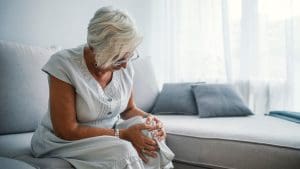 Osteoarthritis occurs when flexible tissue at the end of your bones wears down. This disease is more commonly found in women than men in older age. There are several factors as to why women are more prone to Osteoarthritis. Continue reading below to learn more.
Osteoarthritis occurs when flexible tissue at the end of your bones wears down. This disease is more commonly found in women than men in older age. There are several factors as to why women are more prone to Osteoarthritis. Continue reading below to learn more.
Research suggests that women are more likely to experience joint pain, aching, and stiffness caused by osteoarthritis. For example, evidence suggests that:
- Women aged 50 to 60 years may be 3.5 times (350%) more likely to develop hand osteoarthritis than men in the same age group.
- Women are 40% more likely to develop knee osteoarthritis than men.
- Women are 10% more likely to develop hip osteoarthritis than men.
In addition, limited research suggests women tend to report more severe osteoarthritis pain than men.
Why is there such a difference between men and women when it comes to osteoarthritis? Three possible reasons are described below.
1. Changes in hormone levels
Evidence suggests that women’s susceptibility to osteoarthritis may be related to hormone levels. Hormone levels fluctuate with menstruation cycles and change during menopause.
Menstruation and joint laxity
Increased hormone levels during certain stages of the menstrual cycle may increase joint laxity, which is associated with joint instability and injury. Both joint instability and injury can contribute to the development of osteoarthritis.
The relationship between menstruation, joint laxity, and osteoarthritis is perhaps most clear in the case of knee osteoarthritis. Many researchers believe fluctuations in joint laxity help explain why female athletes are 2 to 8 times more likely than men to tear the anterior cruciate ligament (ACL) in the knee. People who have had a past ACL injury are as much as 4 to 6 times more likely to develop knee osteoarthritis in the affected knee.
Menopause
Women’s risk of developing osteoarthritis increases significantly after menopause, and women may notice joint pain appears or worsens during this time. Estrogen levels drop during menopause. This drop may contribute to changes in the body that accelerate the osteoarthritis process.
2. Differences in the musculoskeletal system and biomechanics
While women’s bodies have the same joints as men’s, certain musculoskeletal differences exist. These differences alter the way women tend to stand, walk, and run, and how their joint surfaces move in relation to one another (joint articulation).
For example, evidence suggests because of anatomical differences, women’s knees experience more wear and tear. One study found that, when compared to men’s knees, the bony surfaces of women’s knee joints do not fit together or move with each other as well. Also, women’s knees contain less cartilage than men’s knees, even when bone size and body mass is taken into account.
Over time, these anatomical differences and the associated joint strain may contribute to the development of osteoarthritis.
3. Tendency to carry excess weight
According to the National Institutes of Health, US women are more likely to be obese or extremely obese than men (40.4% compared to 35%). Obesity increases the risk of osteoarthritis because:
- Extra weight puts more stress on load-bearing joints, such as the hips, knees, and ankles. This stress can lead to damaging friction between the bones of joints.
- Obesity is associated with low-grade, systemic (body-wide) inflammation. This inflammation may contribute to the development of osteoarthritis in any joint, including non-weight bearing joints in the hands.
Experts are still investigating why women are more likely to get osteoarthritis. In the meantime, women—and all adults—can take steps to feel healthier and decrease their joint pain. Walking, physical therapy, and gentle land and pool exercises are generally considered safe because they help maintain and build muscle with minimal joint strain.
If you’re struggling with ways to manage your arthritis or general health, talk with your doctor.
Original article published on arthritis-health.com








